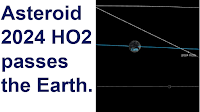Lithium for use in batteries is a major requirement for a transition to electric vehicles, and as such a potential limiting factor in such a transition. In the US, the Infrastructure Investment and Jobs Act requires that all of the materials used in the production of batteries for electric vehicles be sourced within the country by 2030, making the identification of viable sources of lithium a priority for the industry. Recent research has shown that the saline fluids produced as a biproduct of gas and petroleum extraction are often rich in lithium, presenting a potential solution to this problem.
This appears to be particularly true for Palaeozoic groundwaters from the Appalachian region. One such promising source is the Middle Devonian Marcellus Shale Formation. The Marcellus Shale is currently worked as an 'unconventional' natural gas field, in which methane is extracted from the shale by means of hydraulic fracturing (fracking), a process by which water, sand and chemicals are forced into buried sediments in order to shock them into releasing trapped hydrocarbons, which can then be extracted for commercial use.
This process has also resulted in the extraction of large amounts of hypersaline groundwater being brought to the surface, for which there is little current use, with the effect that 95% of this is pumped back into the ground in further fracking operations. The total dissolved solids present in the Marcellus Shale groundwater exceed 100 000 mg/L, leading to a requirement for it to be treated before re-injection of the water into the ground can be carried out. A significant proportion of this dissolved material is lithium, derived from layers of volcanic ash within the shale. This high proportion of lithium makes the Marcellus Shale groundwater a potential target for lithium extraction.
Current extraction infrastructure targeting the Marcellus Shale is concentrated around two hotspots for methane production, one in the northeast of Pennsylvania and one in the southwest of the state. The Marcellus Shale is known to vary in composition over its extent, leading to quite different groundwater chemistry in the two areas. Several previous studies have highlighted the possibility of extracting lithium from Palaeozoic brines, but to date none have considered geochemical variation within these sources, which could have a significant impact on the viability of such projects.
In a paper published in the journal Scientific Reports on 16 April 2024, Justin Mackey of the National Energy Technology Laboratory and the University of Pittsburgh, Daniel Bain, also of the University of Pittsburgh, and Greg Lackey, James Gardiner, Djuna Gulliver, and Barbara Kutchko, also of the National Energy Technology Laboratory, present the results of a study which used chemical and production compliance data reported to the Pennsylvania Department of Environmental Protection to predict the potential yields of lithium from Marcellus Shale groundwaters in the two areas of Pennsylvania where the Shale is currently accessed.
Map of study area showing the Marcellus shale extent, well locations using in decline curve analysis, Water samples used in this study, and previous USGS sample locations. Lithium concentration data was calculated using new data from the study and existing data from the USGS National Produced Waters Database. Mackey et al. (2024). The proportions of lithium and magnesium in groundwater vary between locations within the Marcellus Shale, leading to differences in the maximum likely estimation of lithium yields in different areas. The proportion of lithium in the water is more variable at wells in the northeastern sector of the Shale, varying between 139 and 267 mg/L. In the southwestern area the proportion of lithium is more constant, varying between 112 and 140 mg/L. Although the lithium is more concentrated in the northeast, more water is produced in the southwest, leading to a higher overall lithium yield. Mackay et al. estimate that a well in the southwest portion of the field could produce between 2.80 and 2,99 tonnes of lithium over ten years, while in the same time a well in the northeast could produce between 1.86 and 2.07 tonnes.

Histogram plot of Monte Carlo simulation results (25 000 simulations) of estimated ultimate lithium mass yield from a single Marcellus Shale gas well over 10-years of assumed continuous production. Regional estimates on lithium yields from a southwest Pennsylvania (SW) well is marginally more (approximately 33%) than its northeast Pennsylvania (NE) counterpart. Mackey et al. (2024).
The proportion of magnesium in the water is far higher in the southwest, averaging 2300 mg/L, compared to an average of 1000 mg/L in the northeast. Thus wells in the southwest will produce between 14.3 and 20.7 times as much magnesium as they do lithium, while wells in the northeast will produce between 2.66 and 7.26 times as much magnesium as lithium.
Lithium extracted from pore waters from the Marcellus Shale in Pennsylvania could go a significant way towards meeting the US's need for the metal, although the extraction of the lithium would presumably have an impact on the way the industry works (currently salt rich water is pumped back into wells to produce more methane, with more water produced as a biproduct, which is then re-injected).
The US currently uses about 3000 metric tonnes of lithium per year, and the Marcellus Shale Pore Waters could potentially provide 38-40% of this need, if all the dissolved lithium in the extracted water was recovered. However, about 95% of the water currently extracted from wells targeting the Marcellus Shale in Pennsylvania is reinjected, so if the pore water was diverted for lithium extraction, water from a different source would need to be used for this purpose. This would also involve considerable reorganization of the infrastructure surrounding the wells, and reconsideration of the associated the associated environmental and social impacts. Pore water is currently shipped from wells via a pipeline, then redistributed to other wells for re-injection with minimal treatment. Adding lithium-extraction to this process would require a substantial increase in the infrastructure needed, and subsequently the environmental footprint of the operation, although the value of the lithium would probably more than offset the financial cost of this.
The regional variation in the proportion of lithium in the water in the different areas is likely to have an impact on both the method used to extract lithium from the water, and the ultimate lithium yield. The southwestern portion of the Shale appears likely to produce more lithium overall, as well as having a slower decline in productivity. However, this difference is not huge, with southwestern wells probably producing only 26-38% more lithium than northeastern wells over their lifetime. Mackey et al. also note that it is less efficient and more expensive to extract lithium from water with higher magnesium contents, as is the case in southwestern Pennsylvania. The pore water extracted in the northeast of Pennsylvania has a magnesium/lithium ratio similar to that found in the salar Atacama brines of Chile, from which lithium is currently extracted via a combination of evaporation and distillation, demonstrating the economic viability of the process. Extracting lithium from pore water obtained from the southwestern part of the Marcellus Shale may prove to be a more expensive process, due to the need for additional treatment.
The rate at which lithium production from the Marcellus Shale will decline also needs to be taken into consideration. A typical well in the are suffers an 80% decline in water production over two years. This means that to achieve sustainable production of lithium, new wells would have to be brought into production more-or-less continuously, to replace wells where production had fallen below the point of viability. It is possible that improvements in technology will lead to the lives of wells being extended if the main target of the operation becomes lithium rather than shale gas; Mackey et al.'s production estimates are based entirely upon current extraction methods.
Mackey et al.'s study demonstrates that the Marcellus Shale has the potential to make a significant contribution towards the US's lithium needs, based upon a reasonably conservative set of assumptions. Even allowing for significant over-estimation of potential yields, it is likely that the Shale could produce 30% of curent US lithium demands. Current estimates suggest that the Marcellus Shale hosts about 2.7 billion cubic metres of undiscovered methane gas, suggesting that well-drilling activity here is likely to persist for several decades, and expand into other parts of the deposits, such as north-central Pennsylvania. Thus, even if lithium remains a biproduct of shale gas production, there is a potential for this to continue for decades to come.
See also...


.jpg)
b.jpg)







%20(1)%20(1).png)











%20(1).png)










%20(1).png)









%20(1).png)








%20(1).png)